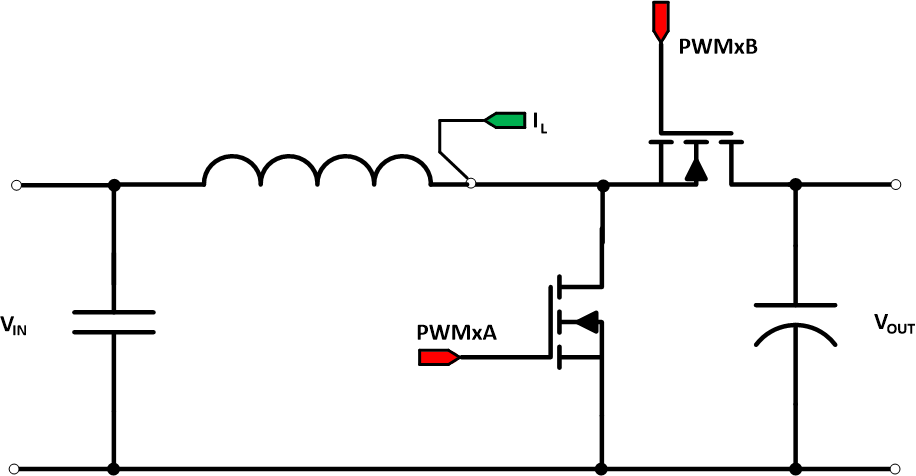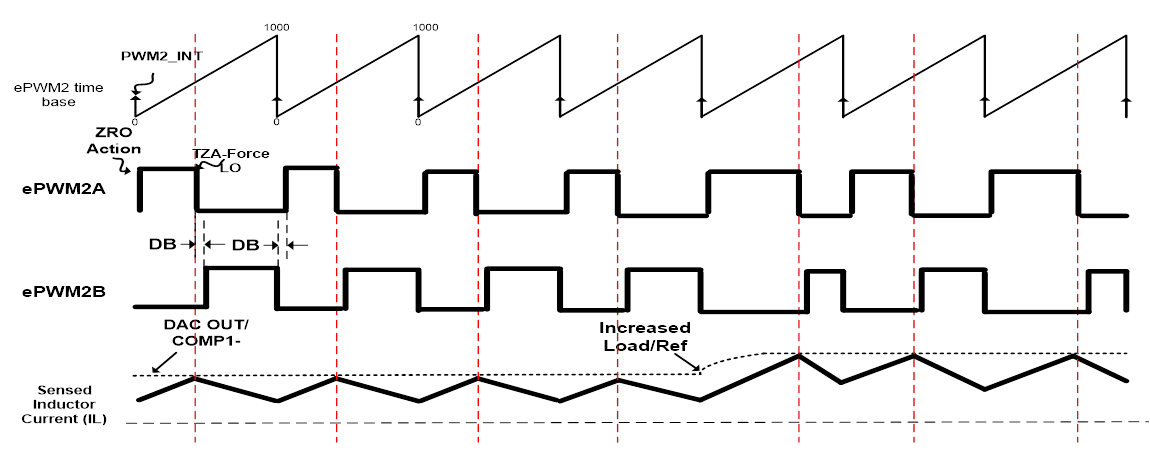SPRACN0F October 2021 – March 2023 F29H850TU , F29H859TU-Q1 , TMS320F280021 , TMS320F280021-Q1 , TMS320F280023 , TMS320F280023-Q1 , TMS320F280023C , TMS320F280025 , TMS320F280025-Q1 , TMS320F280025C , TMS320F280025C-Q1 , TMS320F280033 , TMS320F280034 , TMS320F280034-Q1 , TMS320F280036-Q1 , TMS320F280036C-Q1 , TMS320F280037 , TMS320F280037-Q1 , TMS320F280037C , TMS320F280037C-Q1 , TMS320F280038-Q1 , TMS320F280038C-Q1 , TMS320F280039 , TMS320F280039-Q1 , TMS320F280039C , TMS320F280039C-Q1 , TMS320F280040-Q1 , TMS320F280040C-Q1 , TMS320F280041 , TMS320F280041-Q1 , TMS320F280041C , TMS320F280041C-Q1 , TMS320F280045 , TMS320F280048-Q1 , TMS320F280048C-Q1 , TMS320F280049 , TMS320F280049-Q1 , TMS320F280049C , TMS320F280049C-Q1 , TMS320F28374D , TMS320F28374S , TMS320F28375D , TMS320F28375S , TMS320F28375S-Q1 , TMS320F28376D , TMS320F28376S , TMS320F28377S , TMS320F28377S-Q1 , TMS320F28378D , TMS320F28378S , TMS320F28379D , TMS320F28379D-Q1 , TMS320F28379S , TMS320F28384D , TMS320F28384S , TMS320F28386D , TMS320F28386S , TMS320F28388D , TMS320F28388S , TMS320F28P650DH , TMS320F28P650DK , TMS320F28P650SH , TMS320F28P650SK , TMS320F28P659DH-Q1 , TMS320F28P659DK-Q1 , TMS320F28P659SH-Q1
- The Essential Guide for Developing With C2000™ Real-Time Microcontrollers
- Trademarks
- 1C2000 and Real-Time Control
-
2Sensing Key Technologies
- 2.1 Accurate Digital Domain Representation of Analog Signals
- 2.2 Optimizing Acquisition Time vs Circuit Complexity for Analog Inputs
- 2.3 Hardware Based Monitoring of Dual-Thresholds Using a Single Pin Reference
- 2.4 Resolving Tolerance and Aging Effects During ADC Sampling
- 2.5 Realizing Rotary Sensing Solutions Using C2000 Configurable Logic Block
- 2.6 Smart Sensing Across An Isolation Boundary
- 2.7 Enabling Intra-Period Updates in High Bandwidth Control Topologies
- 2.8 Accurate Monitoring of Real-Time Control System Events Without the Need for Signal Conditioning
-
3Processing Key Technologies
- 3.1 Accelerated Trigonometric Math Functions
- 3.2 Fast Onboard Integer Division
- 3.3 Hardware Support for Double-Precision Floating-Point Operations
- 3.4 Increasing Control Loop Bandwidth With An Independent Processing Unit
- 3.5 Flexible System Interconnect: C2000 X-Bar
- 3.6 Improving Control Performance With Nonlinear PID Control
- 3.7 Understanding Flash Memory Performance In Real-Time Control Applications
- 3.8 Deterministic Program Execution With the C28x DSP Core
- 3.9 Efficient Live Firmware Updates (LFU) and Firmware Over-The-Air (FOTA) updates
-
4Control Key Technologies
- 4.1 Reducing Limit Cycling in Control Systems With C2000 HRPWMs
- 4.2 Shoot Through Prevention for Current Control Topologies With Configurable Deadband
- 4.3 On-Chip Hardware Customization Using the C2000 Configurable Logic Block
- 4.4 Fast Detection of Over and Under Currents and Voltages
- 4.5 Improving System Power Density With High Resolution Phase Control
- 4.6 Safe and Optimized PWM Updates in High-Frequency, Multi-Phase and Variable Frequency Topologies
- 4.7 Solving Event Synchronization Across Multiple Controllers in Decentralized Control Systems
- 5Interface Key Technologies
- 6Safety Key Technologies
- 7References
- 8Revision History
4.2.2 In Depth
For better power efficiency, many DC-DC systems implement a synchronous boost controller, where the secondary switch replaces the feed forward diode that exists in a regular boost controller (#T5843526-100). Peak Current Mode Control is one of the more common methods used to control this topology and the C2000 MCU has some unique features that allow it to implement this type of control very efficiently.
 Figure 4-2 Synchronous Boost
Controller
Figure 4-2 Synchronous Boost
ControllerThe addition of the second FET demands precise control of the ON/OFF time of the primary and secondary switch relative to one another. If the switches are in the “ON” state at the same time, there is a direct path to ground for the active current to flow, which is not only in-efficient but also potentially harmful to the lifetime of the FET switches.
An accurate way to implement this type of system is to have the comparator monitor the inductor current and actuate the FETs when the current exceeds a predefined threshold. Ideally, when one FET is switched ON, the other FET can be switched OFF at the same time. However, due to switch mismatch and board propagation delays, simultaneous switching from the controller likely will not result in simultaneous switching at the FETs, which creates the shoot through mentioned earlier. While techniques in software can help hold off the switching of the secondary switch to avoid this condition, these can be challenging to implement with the various hardware interdependencies coupled with the time constraints of the control loop.
The C2000 MCU has implemented programmable deadband control, derived from the comparator output itself, to prevent this condition while keeping the C28x CPU unloaded (#T5843526-101). This allows a complete PCMC solution to be realized outside of the CPU domain once initialized. This logic exists on all PWM modules on a given device, allowing multiple stages to have different deadbands, such as a Phase Shifted Full Bridge, where there are multiple switching pairs.
 Figure 4-3 Cycle by Cycle Trip Action of
the COMP Module With Configurable Deadband
Figure 4-3 Cycle by Cycle Trip Action of
the COMP Module With Configurable Deadband